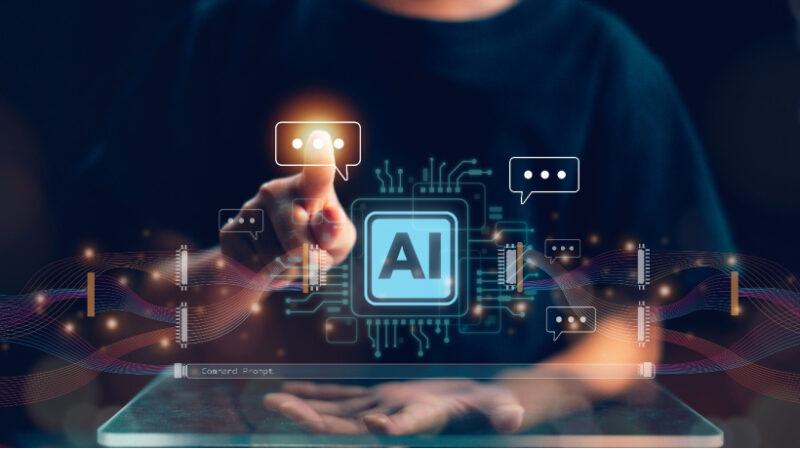
Harnessing ChatGPT-4 To Transform eLearning Efficiency
The evolution of Artificial Intelligence has brought unprecedented advancements to various sectors, including education. One of the most promising developments in this arena is ChatGPT-4, the latest iteration of OpenAI’s language model. ChatGPT-4 offers a robust platform for enhancing both the speed and quality of eLearning programs. Here’s a detailed exploration of how educators and Instructional Designers can utilize ChatGPT-4 to revolutionize their eLearning offerings.
6 Ways ChatGPT-4 Maximizes Speed And Quality In eLearning
1. Personalized Learning Experiences
- Adaptive learning paths
ChatGPT-4 can analyze individual learner data to create customized learning paths. By understanding each student’s strengths and weaknesses, the AI can suggest specific modules or resources, ensuring that learners receive content tailored to their needs. This personalized approach not only enhances the learning experience but also improves retention and engagement. - Real-time feedback
With ChatGPT-4, learners can receive instant feedback on their assignments and quizzes. The AI can provide detailed explanations for correct answers and constructive feedback for incorrect ones, facilitating a deeper understanding of the material. This immediate feedback loop accelerates the learning process and helps students correct mistakes promptly.
2. Content Creation And Curation
- Automated content generation
ChatGPT-4 excels at generating high-quality educational content, from lesson plans and study guides to quiz questions and interactive activities. Instructional Designers can leverage this capability to produce engaging and informative materials quickly, reducing the time required for course development. - Content summarization
For eLearning courses that involve extensive reading materials, ChatGPT-4 can summarize key points, making it easier for learners to grasp essential concepts. This is particularly useful for complex subjects where dense texts might be overwhelming. Summarized content ensures that learners can focus on critical information without getting bogged down by details.
3. Enhanced Student Support
- Virtual tutoring
ChatGPT-4 can serve as a virtual tutor, available 24/7 to answer student queries and provide assistance. Whether it’s clarifying a concept from a lecture or helping with homework problems, the AI offers reliable support, ensuring that students have access to help whenever they need it. - Discussion facilitation
In online discussion forums, ChatGPT-4 can facilitate conversations by posing thought-provoking questions, providing relevant information, and summarizing discussions. This keeps the conversation flowing and ensures that all participants stay engaged and on track.
4. Streamlined Administrative Tasks
- Automated grading
One of the most time-consuming aspects of teaching is grading assignments and exams. ChatGPT-4 can automate this process, evaluating responses with high accuracy and providing detailed feedback. This not only saves time for educators but also ensures consistent and unbiased grading. - Scheduling and notifications
ChatGPT-4 can manage scheduling tasks, sending reminders for upcoming deadlines, classes, and events. This helps both educators and students stay organized and reduces the administrative burden on instructors.
5. Improving Engagement And Motivation
- Interactive learning modules
ChatGPT-4 can create interactive eLearning modules that incorporate multimedia elements such as videos, animations, and quizzes. These modules make learning more engaging and cater to different learning styles, keeping students motivated and interested. - Gamification
By integrating gamification elements such as badges, leaderboards, and rewards, ChatGPT-4 can enhance the learning experience. Gamification not only makes learning fun but also encourages healthy competition and goal setting, which are powerful motivators for students.
6. Language And Accessibility
- Multilingual support
ChatGPT-4 supports multiple languages, making eLearning programs accessible to a broader audience. This is particularly beneficial for institutions with a diverse student body or those offering courses globally. - Accessibility features
For learners with disabilities, ChatGPT-4 can provide accommodations such as text-to-speech, speech-to-text, and customizable interfaces. These features ensure that all students have equal access to educational resources.
Conclusion
The integration of ChatGPT-4 into eLearning programs offers significant advantages in terms of speed and quality. By providing personalized learning experiences, generating and curating content, offering enhanced student support, streamlining administrative tasks, and improving engagement and accessibility, ChatGPT-4 stands as a transformative tool in modern education. As AI continues to evolve, its role in education will undoubtedly expand, promising even more innovative and effective ways to facilitate learning.
Educators and Instructional Designers should embrace ChatGPT-4 to not only enhance their eLearning programs but also to stay ahead in the rapidly changing educational landscape. By doing so, they can ensure that their students receive the best possible learning experience, preparing them for success in an increasingly digital world.